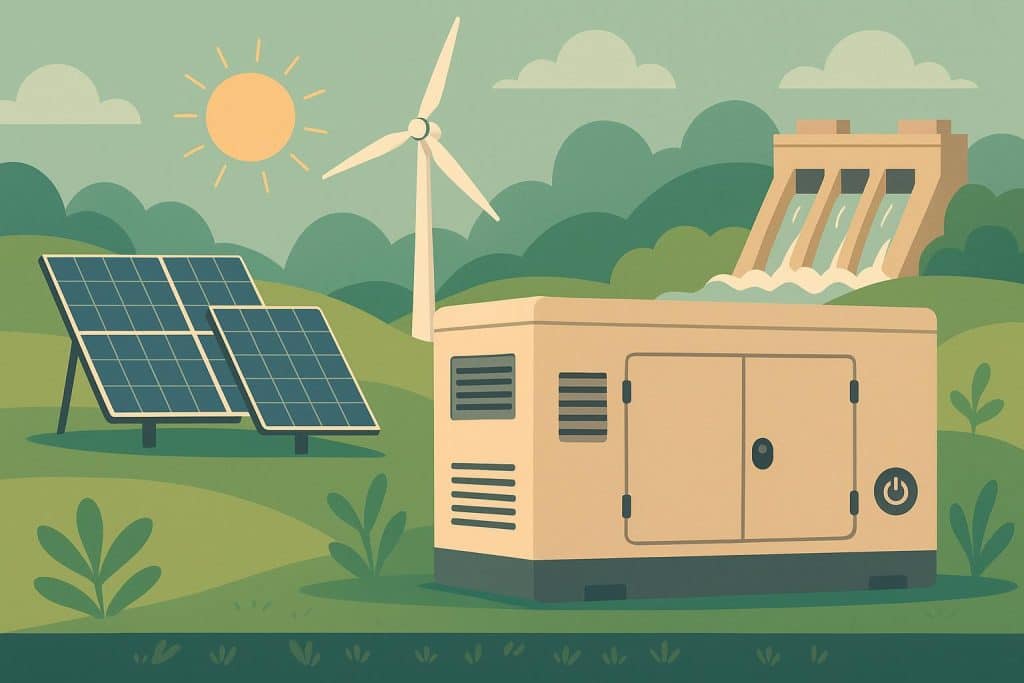Sustainable energy solutions are reshaping the way industries, commercial sites, and communities secure reliable power. With pressure mounting to cut emissions and decrease fossil fuel reliance, the focus has shifted to generators designed for both exceptional performance and eco-friendly operations. Modern designs integrate hybrid technologies, fuel flexibility, and smart monitoring to optimize energy output while reducing environmental impact.
Industrial Standards
Among the most popular choices for medium-to-large facilities is the 250kva generator, standing out for its blend of fuel efficiency, reduced emissions, and integrated digital controls. These units often feature advanced oil management, optimized turbochargers, and remote monitoring systems. Manufacturers have introduced models that comply with the strictest emission norms—such as CPCB IV+ ensuring operations remain clean even under maximum load. Smart upgrades like automatic voltage regulators, versatile output options, and digital display panels further enhance control and output reliability, making the 250kva generator an industry benchmark.
Hybrid and Renewable Generator Innovations
Organizations increasingly turn to hybrid generators—systems that combine conventional engines with renewable energy inputs such as solar panels, wind turbines, and battery storage. These hybrid solutions offer lower fuel consumption and more consistent energy availability, particularly for sites seeing fluctuating demand or intermittent grid supply. By leveraging varied energy sources, businesses achieve robust backup capability while ensuring a significant reduction in carbon footprint.
Key features in advanced models include:
- Seamless integration of battery storage to stabilize output and store surplus power for later use.
- Fuel adaptivity, allowing operation with low-carbon alternatives like biodiesel, biogas, and HVO.
- Microgrid-compatibility, enabling efficient management of distributed energy resources and off-grid operations.
Emission Reduction Technologies
Emission control has become a vital part of generator engineering. Innovations such as particulate filtration, exhaust gas recirculation, selective catalytic reduction, and heat recovery systems are increasingly standard as regulations tighten globally. Leading manufacturers have adopted low-sump capacity engines and brushless alternators that cut oil use, minimize maintenance, and further shrink ecological impact.
Green generator design includes:
- Real-time emissions monitoring and reporting through digital sensors.
- Use of sound insulation, making units suitable for noise-sensitive environments like hospitals or schools.
- Automatic shutdown systems responding to low oil or overheating for added safety.
Smart Monitoring and Digital Management
Efficiency and sustainability are reinforced by innovations in remote monitoring and digital diagnostics. Control panels and cloud-based platforms allow users to track fuel consumption, performance trends, and maintenance schedules from anywhere. Predictive maintenance technologies flag issues before breakdowns occur, significantly reducing downtime and lengthening generator lifespans.
Fuel Flexibility and Lifecycle Economics
Economic and environmental advantages both point toward generators capable of running on multiple fuels. Diesel engines now perform efficiently with biofuels, while hydrogen and magnetic generator innovations are on the horizon for truly clean energy conversion. Companies that invest in multi-fuel capabilities and supplier-certified after-sales support see reductions in lifecycle costs, maintenance, and overall carbon footprint.
Warranty coverage and service networks are crucial, especially for organizations where uptime and compliance are non-negotiable. The latest generator models come with extended warranties and robust service packages, providing peace of mind and operational reliability.
Generators in the Era of the Microgrid
Microgrids have become essential tools for distributed energy management, blending generators, renewables, and storage solutions to maximize independence and sustainability. In off-grid or unstable-grid zones, generators act as reliable anchors able to spin up at a moment’s notice and support renewable inputs during dips in production. This flexibility empowers industries, agricultural sites, and critical infrastructure to embrace clean energy without compromising on reliability.
The Green Future of Standby and Prime Power
Environmental and market forces will continue to drive innovation in generator technology. Next-generation units incorporate:
- Zero-emission fuel cell and SOFC microgrid systems.
- Advanced energy management software for load balancing and resource allocation.
- Adaptable business models, including leasing and “as a service” contracts, ensuring broad access to sustainable equipment.
